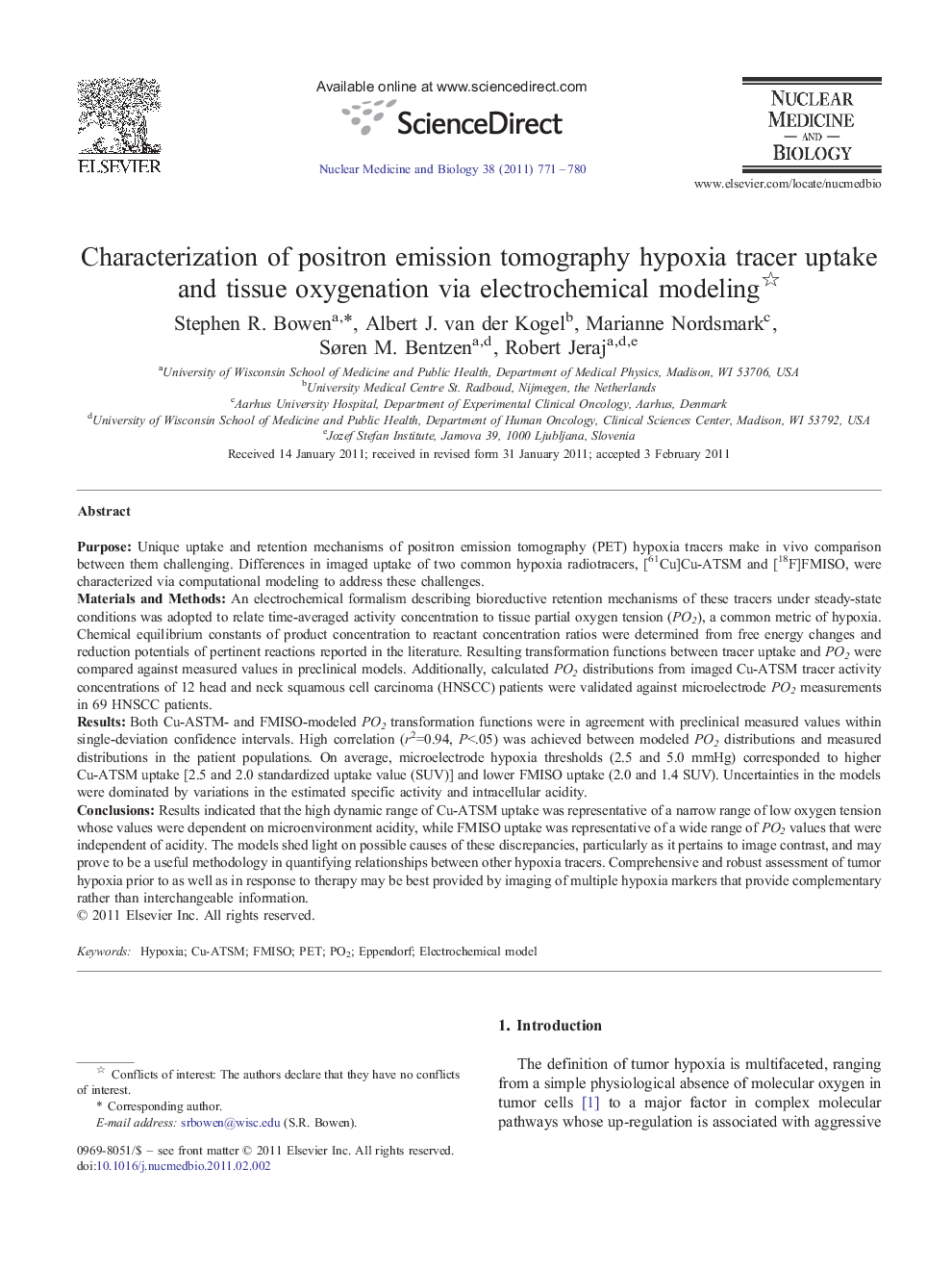| کد مقاله | کد نشریه | سال انتشار | مقاله انگلیسی | نسخه تمام متن |
|---|---|---|---|---|
| 2153925 | 1090212 | 2011 | 10 صفحه PDF | دانلود رایگان |

PurposeUnique uptake and retention mechanisms of positron emission tomography (PET) hypoxia tracers make in vivo comparison between them challenging. Differences in imaged uptake of two common hypoxia radiotracers, [61Cu]Cu-ATSM and [18F]FMISO, were characterized via computational modeling to address these challenges.Materials and MethodsAn electrochemical formalism describing bioreductive retention mechanisms of these tracers under steady-state conditions was adopted to relate time-averaged activity concentration to tissue partial oxygen tension (PO2), a common metric of hypoxia. Chemical equilibrium constants of product concentration to reactant concentration ratios were determined from free energy changes and reduction potentials of pertinent reactions reported in the literature. Resulting transformation functions between tracer uptake and PO2 were compared against measured values in preclinical models. Additionally, calculated PO2 distributions from imaged Cu-ATSM tracer activity concentrations of 12 head and neck squamous cell carcinoma (HNSCC) patients were validated against microelectrode PO2 measurements in 69 HNSCC patients.ResultsBoth Cu-ASTM- and FMISO-modeled PO2 transformation functions were in agreement with preclinical measured values within single-deviation confidence intervals. High correlation (r2=0.94, P<.05) was achieved between modeled PO2 distributions and measured distributions in the patient populations. On average, microelectrode hypoxia thresholds (2.5 and 5.0 mmHg) corresponded to higher Cu-ATSM uptake [2.5 and 2.0 standardized uptake value (SUV)] and lower FMISO uptake (2.0 and 1.4 SUV). Uncertainties in the models were dominated by variations in the estimated specific activity and intracellular acidity.ConclusionsResults indicated that the high dynamic range of Cu-ATSM uptake was representative of a narrow range of low oxygen tension whose values were dependent on microenvironment acidity, while FMISO uptake was representative of a wide range of PO2 values that were independent of acidity. The models shed light on possible causes of these discrepancies, particularly as it pertains to image contrast, and may prove to be a useful methodology in quantifying relationships between other hypoxia tracers. Comprehensive and robust assessment of tumor hypoxia prior to as well as in response to therapy may be best provided by imaging of multiple hypoxia markers that provide complementary rather than interchangeable information.
Journal: Nuclear Medicine and Biology - Volume 38, Issue 6, August 2011, Pages 771–780